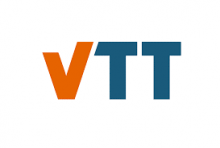
Objectives of the service

Cityfier is a digital service to analyse and forecast the value of a city district or a single property. Cityfier combines GIS data, earth observation data and Urban Master Plans and uses them as input data for the analysis in order to evaluate and forecast the value of residential real estates in the area.
Objective is to assist urban planning decision making process in assessing the impact of natural spaces on property prices by creating dynamic value assessment model which combines earth observation data, housing prices and other socially and economically relevant metrics. The service is aiming to bring major rewards in terms of land value and stakeholder engagement process.
Users and their needs
Key customers to the developed service are city executive offices, project managers, architects and city planners who are responsible for strategic urban planning, detailed planning, plot development, landscape planning in the city. At the first phase our prime market is in Finland and after the first phase the other Nordic countries.
Urban planning in major cities faces the following pains:
- Urban planning processes of major cities face pressure from requirements of densification, mixed use and accessibility.
- Long term valuation of urban areas using hedonic regression analyses is not dynamic and actively used since economic research resources are limited and current methods are time consuming and focusing only to a limited subject.
- Importance of green areas in the vicinity of residential areas is increasing. Green areas play a significant role in the physical and mental well-being of people.
- Public open spaces contain a lot of functions and values that cannot be measured from traditional land cover maps; e.g. quality of the green environment and quantity of green areas in relation to recreation activities.
- Cities need policy enabling tools to long term areal development serving stakeholder engagement processes
The analysis which Cityfier tool provides will help and assist cities in the decision-making process of urban planning. It provides information about inhabitants' valuation of properties, natural spaces and recreational areas in their living environment. Analysis results enable cities to compare different plans for developing the area and guides to choose the one that provides the best valuation for the whole area. This helps cities to attract residents and commercial service provides to the area which ensures the vitality of the whole area.
Service/ system concept
Cityfier analyses and forecasts the value of a city district by combining different data sources as input data. The following input data is used:
- GIS Data which includes the information about the residential properties and the proximity of private and public services (shops, schools, health care, transportation)
- Information about housing prices
- Information about green areas and water bodies extracted from earth observation data
- Urban master plans for the area in order to know how the district is going to develop in the future
As a result Cityfier offers the current valuation and a forecast of the value increase of the current district. There is also a possibility to compare different plans and choose the one which has the best value increase. The analysis results and other vital KPIs can be visualized using Cityfier and delivered to the customers as reports.

Space Added Value
According to literature green vegetation and water areas seem to increase the value of the nearby apartment. In addition to the vicinity of water bodies and green areas it is anticipated that the vegetation type, species or vegetation health may have influence for the valuation of apartment location.
Information about water and green vegetation areas can be obtained from may be obtained from two sources:
- From existing maps
- From earth observation (EO) satellite data
These two sources provide different detail levels. The more detailed information about the areas cannot be extracted from existing maps (e.g. quality of green area, vegetation type, tree species, vegetation health, water quality). The proposed study will analyse advantages and disadvantages of these two different data sources in Cityfier development.
By developing a way to utilize satellite images we expect to get more accurate and up to date information on urban environment and thus to obtain more accurate predictions on the value of the real estate properties in the area. This gives Cityfier a chance to expand to market area and a competitive edge compared to the competitors.
Current Status
During the Feasibility Study the consortium held three workshops with the two Finnish client cities involved in the research project. The workshops were held in order to validate the value proposition and define the essential KPIs for the urban development. The potential study areas were also selected in these workshops. The study areas were used for the creation of POC analysis when testing out the accuracy of the new price prediction model. The purpose of PoC was also to demonstrate that Cityfier tool can be used to evaluate the value of green areas to the property prices. The price prediction results showed that removing the green areas does not seem to have negative impact on the apartment prices. The assumption of the positive influence of green vegetated to the apartment prices did not seem to hold for the vegetated areas with the data set used in this study. Therefore, the consortium decided to stop the feasibility study after the Business Case Review.
The future plan for Cityfier is to improve our non-EO data price prediction models utilizing the results from the study. The idea is to develop our tool further so that in can better answer the need and challenges city planners face. Our target is also to expand our tool to private sector and provide analysis for the city district property value development for real estate investors and developers.

Image credit: Copernicus Sentinel data 2018
Prime Contractor(s)
Subcontractor(s)




